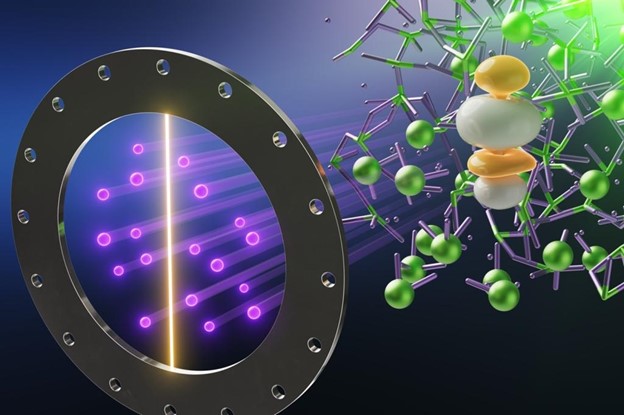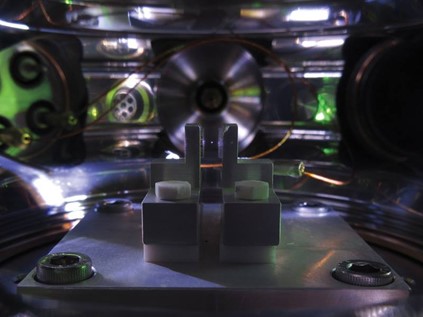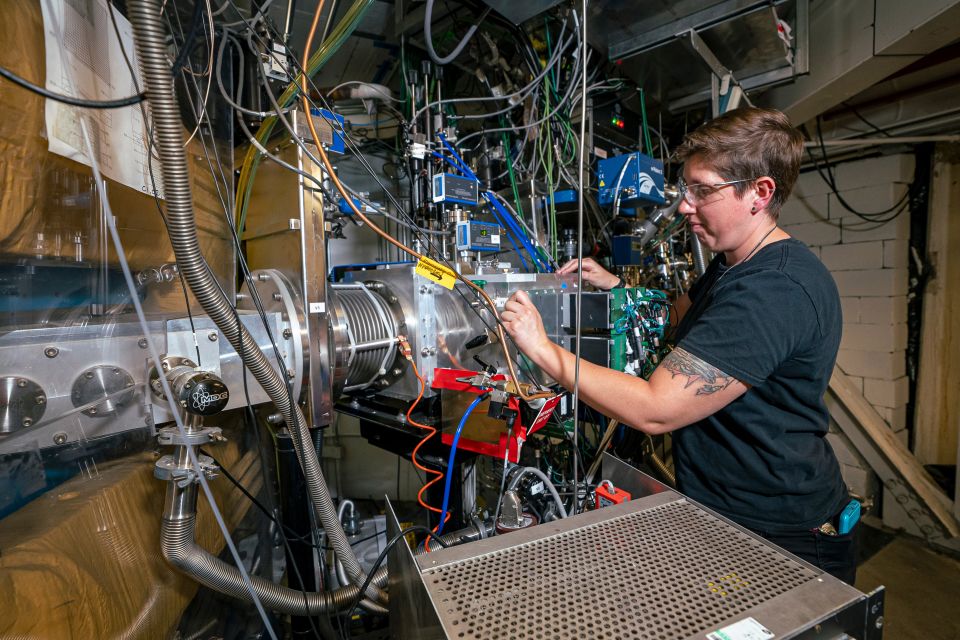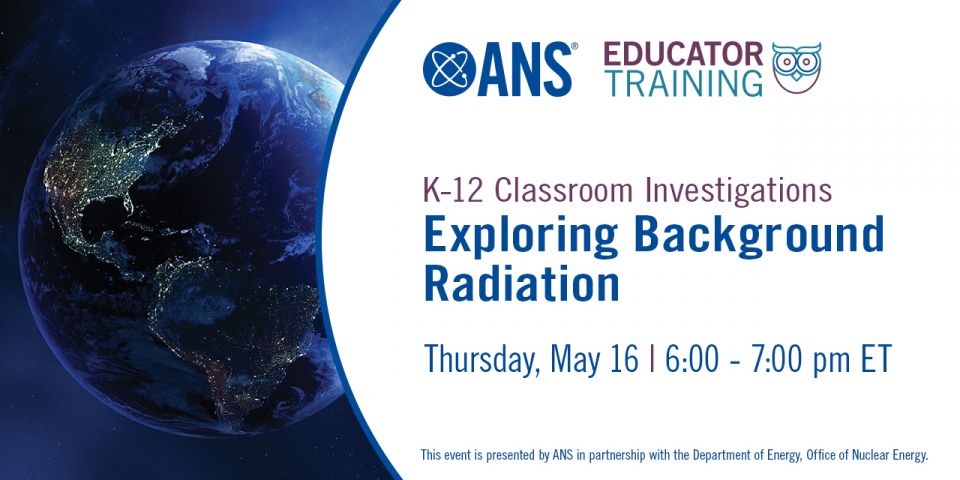Sir James Chadwick's Discovery of Neutrons
The September installment of Nuclear Pioneers explored the artificial radioactivity research of Irène and Frédéric Joliot-Curie, for which they were awarded the Nobel Prize in Chemistry on December 10, 1935. A misinterpretation of data perhaps cost the Joliot-Curies an earlier Nobel Prize, but instead led to James Chadwick taking the Nobel podium two days after the Joliot-Curies, on December 12, 1935, to receive the Nobel Prize in physics for discovering the neutron.
Atomic Mass Mystery
When Ernest Rutherford discovered the proton in 1918, scientists at the time might have thought that they had finally figured out atomic structure once and for all. Negatively-charged electrons, orbiting a tiny atomic nucleus composed of positively-charged protons, like a miniature solar system-this model explained atoms being electrically neutral, using only protons and electrons, the two fundamental atomic particles known at the time.
However, it was also well-known that atomic mass is generally twice the atomic number (i.e., the number of protons), and that almost all the mass of an atom is concentrated in the nucleus. What could account for all this additional mysterious mass?
Nuclear Electrons?
The theory at the time was that there were "nuclear electrons" in the atomic nucleus, along with additional protons. The extra protons were thought to provide the extra atomic mass, while the additional electrons would cancel out their positive charge, leaving the atom electrically neutral. Eventually, however, calculations using Heisenberg's uncertainty principle showed it was not possible for electrons to be contained in the nucleus.
There were other ideas. Ernest Rutherford in 1921 postulated a particle called the "neutron," having a similar mass as a proton but electrically neutral. Rutherford imagined a paired proton and electron somehow joined in one particle. One major problem with Rutherford's "neutron theory"-not much evidence.
Mysterious "Gamma Radiation"
Evidence was difficult to come by. Such a "neutron" would prove difficult to detect with 1920s equipment. Detection methods of that day mainly relied on the electrical charges of particles revealing their presence-but neutrons, having no electrical charge, would leave no trace.
In 1930, the physicists Walther Bothe and Herbert Becker bombarded beryllium with alpha particles (helium nuclei) emitted from the radioactive element polonium, and they found that the beryllium gave off an unusual, electrically neutral radiation. They interpreted this radiation to be high-energy gamma rays (photons).
 However, this radiation was more penetrating than any gamma radiation known. In 1932, Irène and Frédéric Joliot-Curie performed experiments with this radiation, and showed that if it fell on paraffin or other hydrogen-containing compound, it could eject protons with very high energy from that substance.
However, this radiation was more penetrating than any gamma radiation known. In 1932, Irène and Frédéric Joliot-Curie performed experiments with this radiation, and showed that if it fell on paraffin or other hydrogen-containing compound, it could eject protons with very high energy from that substance.
The Compton Effect
The Joliot-Curie radiation discovery was amazing, because photons have no mass. It was asking quite a lot for a massless particle to eject relatively heavy protons. It was well known that photons could strike a metal surface and eject electrons (as occurs in the then-recently-discovered Compton Effect, proving the particle nature of light) and the Joliot-Curies believed something similar was happening in their experiments.
But protons are 1,836 times heavier than electrons-and that much harder to budge. Nevertheless, the Joliot-Curies stuck to their interpretation that high-energy photons were striking the hydrogen atoms in paraffin to eject protons.
How to Detect a Neutron
James Chadwick was working at the Cavendish laboratory in Cambridge at that time. The lab was directed by Ernest Rutherford, and reportedly when Chadwick relayed the Joliot-Curie results and interpretation to Rutherford, he exclaimed "I do not believe it!"
Chadwick himself was certainly suspicious. He immediately repeated the experiments, using many different elements as radiation targets besides paraffin. By comparing the energies of particles ejected from all these various targets, Chadwick was able to prove that the radiation causing the ejected particles was much more energetic than could be accounted for by photons.
Instead, the range and power of the radiation could be accounted for quite easily if it consisted of particles having the same mass as protons. What really occurred when one bombarded beryllium with alpha particles, Chadwick explained, was the formation of a carbon-12 nucleus and the emission of a neutron. Formation of a carbon-13 nucleus with the emission of a photon, as the Joliot-Curies had postulated, could not provide sufficient energy for the scattering pattern and energies of ejected particles from Chadwick's various targets.
Why Neutrons?
Neutrons are necessary within an atomic nucleus because they bind with protons via the "strong nuclear force"; protons are unable to bind with each other directly because their mutual electromagnetic repulsion is stronger than the "strong force." Neutrons keep the atomic nucleus from flying apart, one of the features that allows for atoms heavier than hydrogen, thus making our universe much more interesting than one would otherwise expect.
Implications
It's hard to imagine a more momentous event than Chadwick's discovery of neutrons. Radiation experiments at that time used helium nuclei, which are electrically charged and therefore repelled by electrical forces. These electrical forces become quite considerable close to the nuclei of heavier atoms, which are loaded with many protons (and neutrons). However, neutrons do not need to overcome any electrical barrier to penetrate (and split) the nucleus of even the heaviest, most-proton-charged atomic nucleus. After Chadwick's discovery, it was soon postulated that neutrons could mediate a nuclear chain reaction, which eventually led to the atomic bomb, and later to nuclear power production.
__________
Paul Bowersox prefers interesting universes with heavy elements and is a regular contributor to ANS Nuclear Cafe.
















